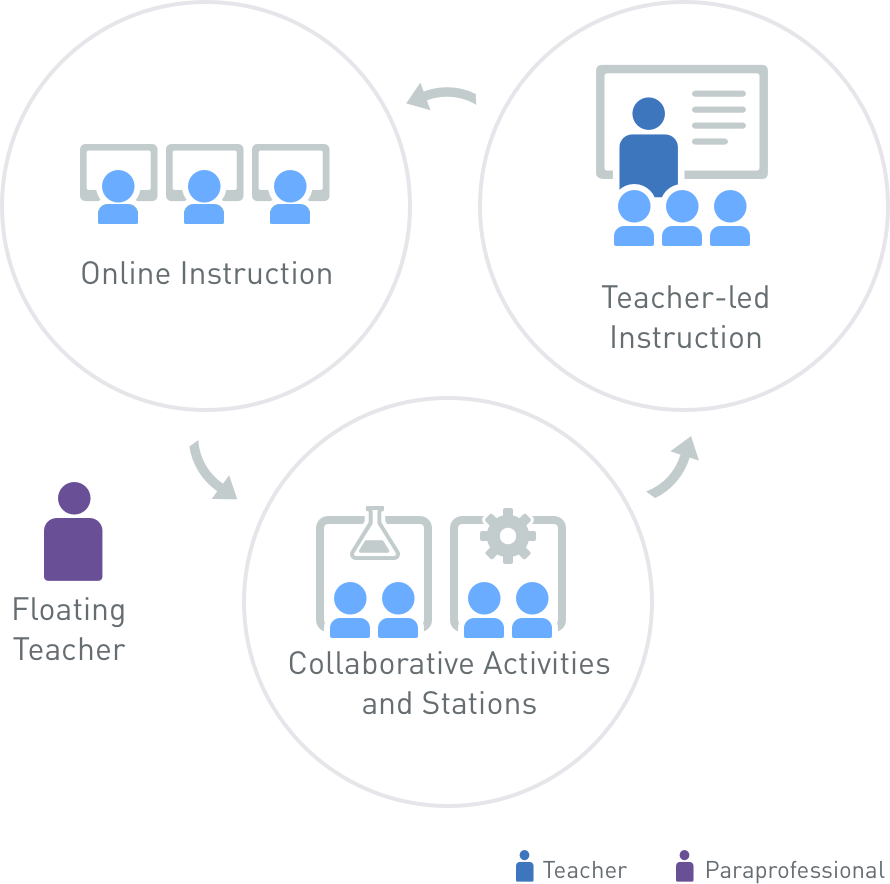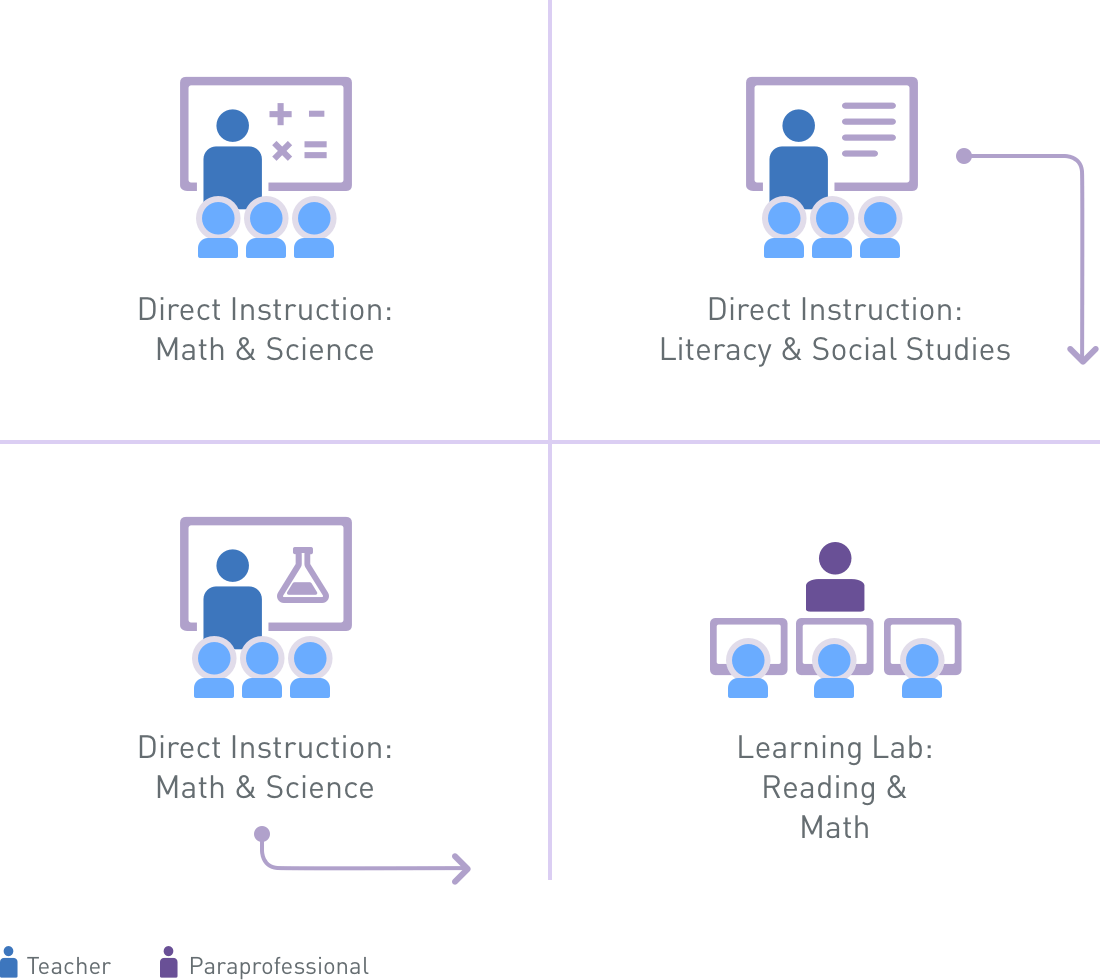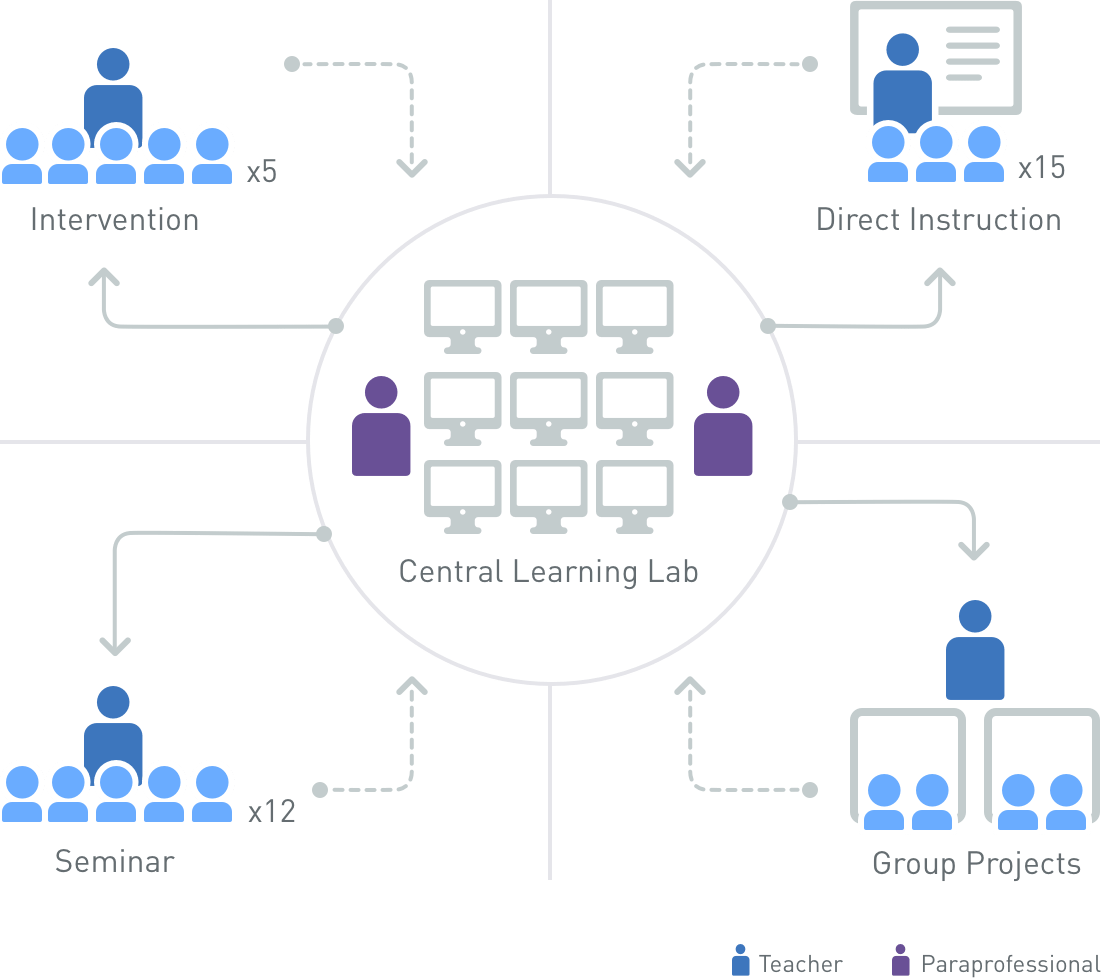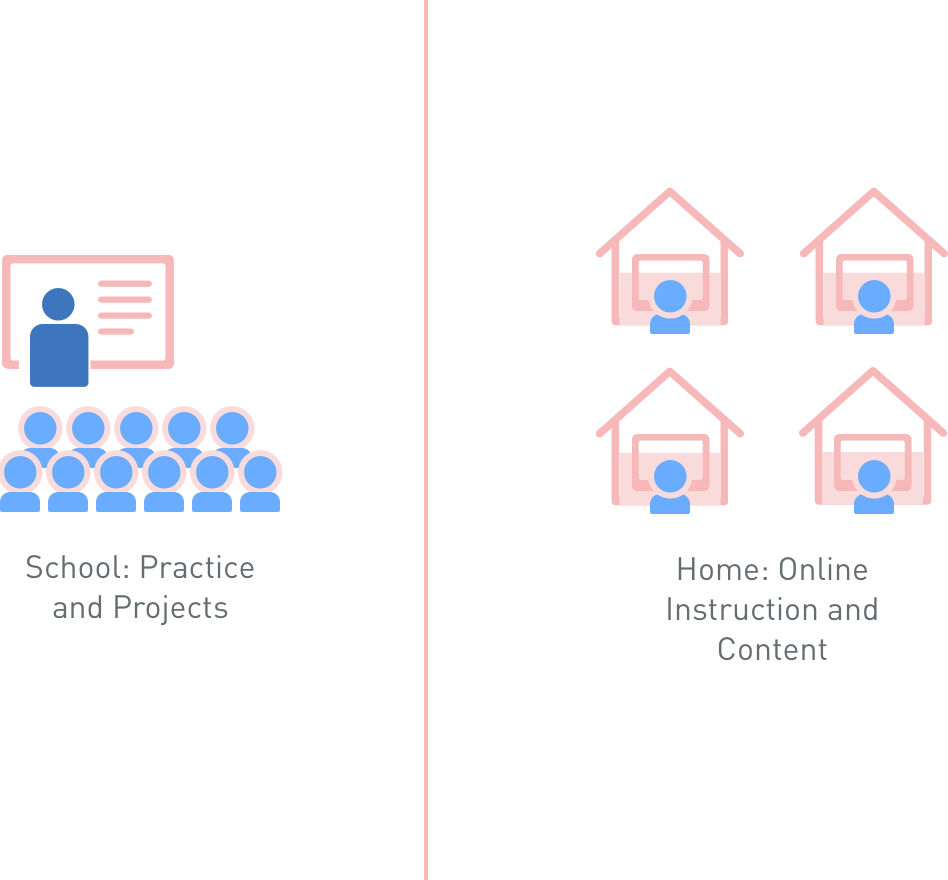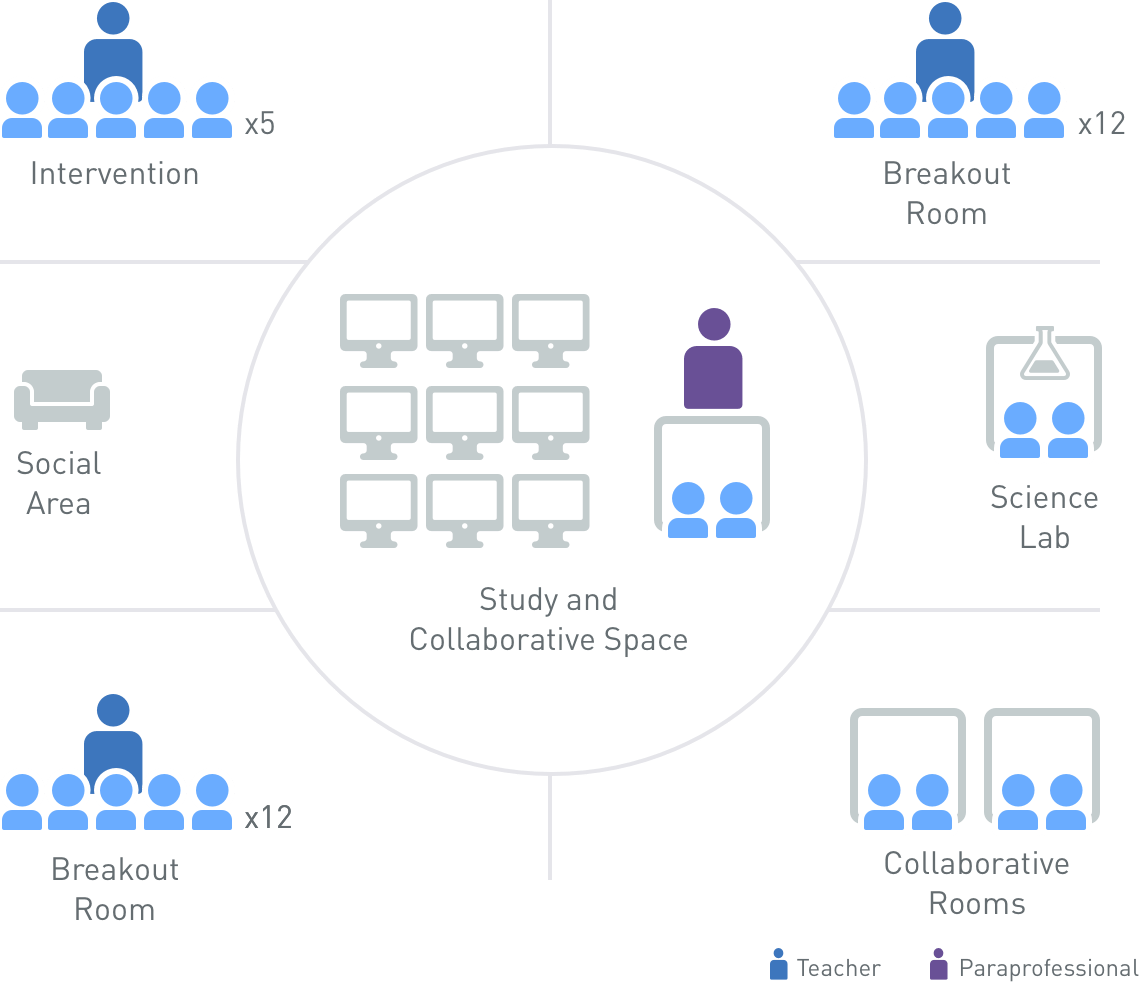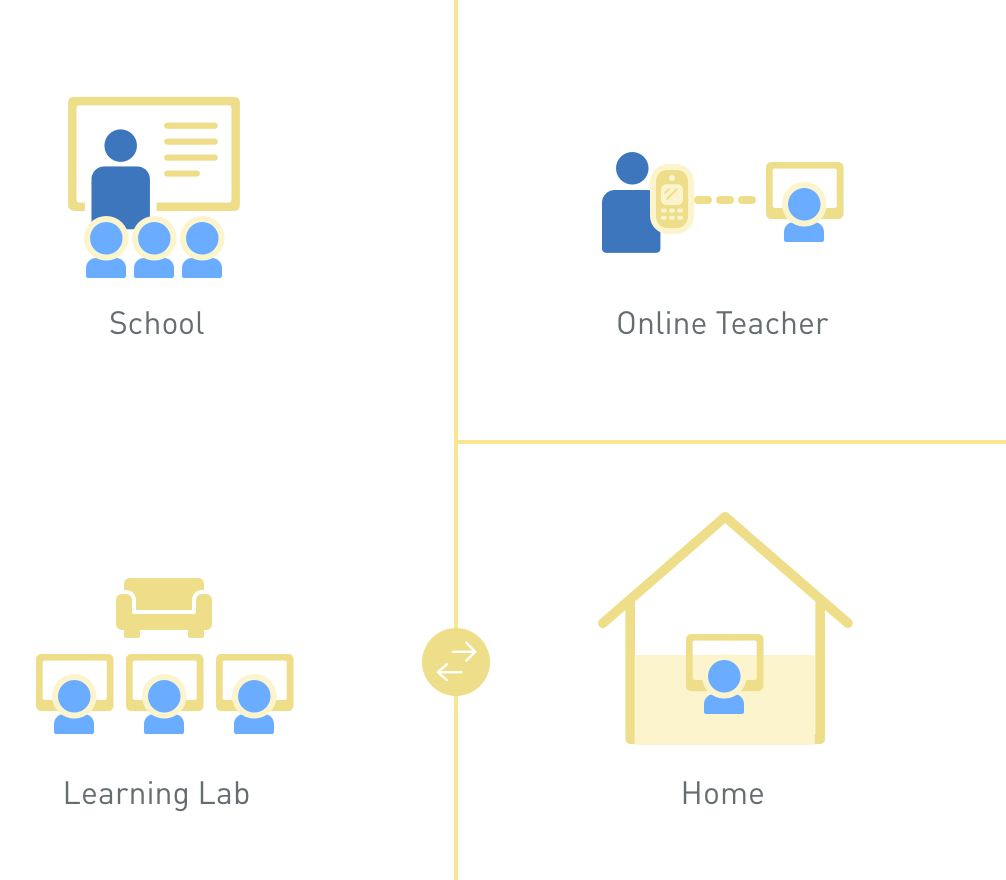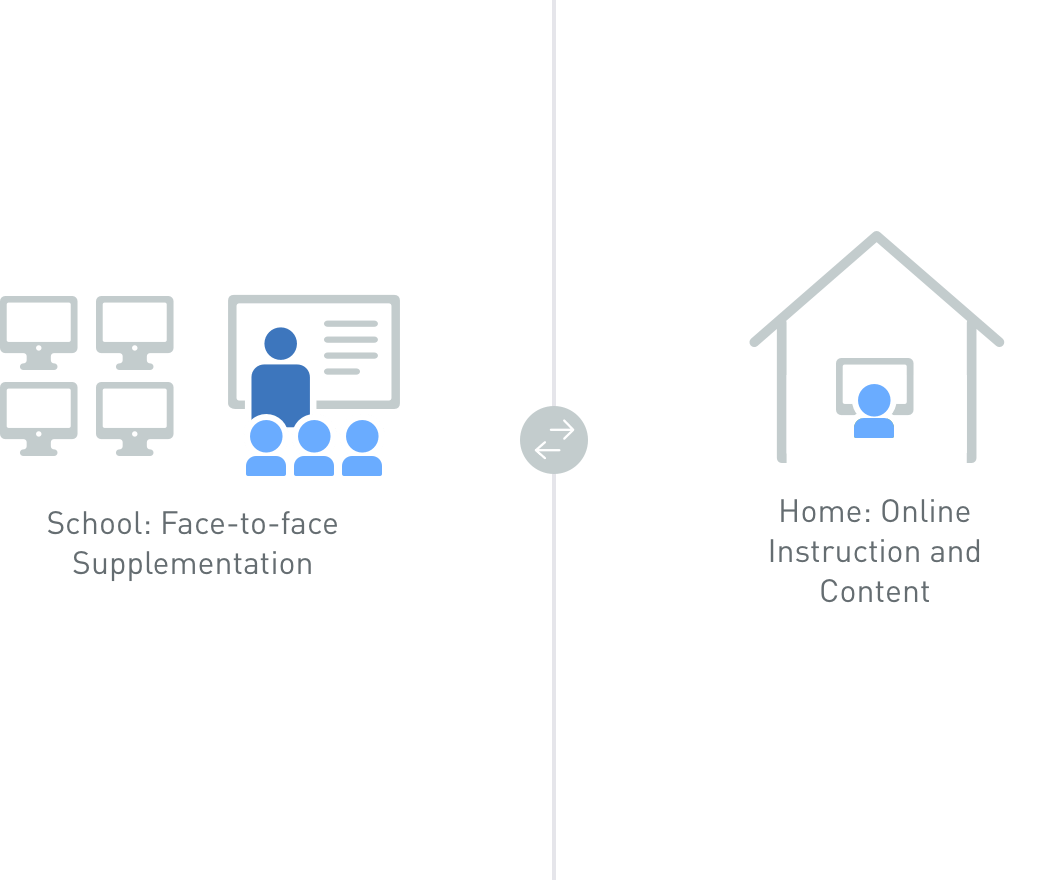Station Rotation
The Station Rotation model allows students to rotate through stations on a fixed schedule, where at least one of the stations is an online learning station. This model is most common in elementary schools because teachers are already familiar rotating in “centers” or stations.
 Watch Video
Model in Action
Watch Video
Model in Action
